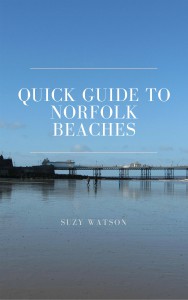- Explore Norfolk
- Walking Holidays
- Walsingham Way Pilgrimage Walking Route
- Why Walk A Pilgrim Route
Why Walk a Pilgrim Route?
Exploring Meaningful Growth, History, and Personal Discovery
Have you ever felt the urge to step away from the everyday hustle and bustle and just embark on a journey that connects you to something bigger—whether that’s history, nature, or simply your own thoughts?
Norfolk’s ancient pilgrim trails offer just that: a chance to walk in the footsteps of medieval travellers, tracing routes steeped in centuries of stories, challenges, and quiet reflection.
But this isn’t just about the past. It’s about your own journey—discovering new landscapes, testing your limits, and finding moments of peace and clarity along the way.
Whether you come seeking spiritual connection, historical adventure, or simply a refreshing escape into the Norfolk countryside, these historic paths invite you to:
- slow down
- look around
- and discover more about yourself with every step
Come and explore Norfolk’s pilgrim route, The Walsingham Way, one of the most historically significant pilgrim routes in England leading to the holy shrine of Walsingham – often called England's Nazareth! You might be surprised at what you find!
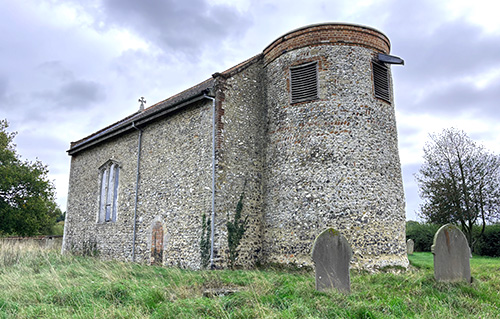
Understanding Pilgrimage: Why Walk A Pilgrim Route
Pilgrimage exists across cultures and throughout history for one simple reason - it responds to something fundamental in human nature. The act of journeying to a significant place speaks to us on multiple levels.
For Christians specifically, this physical journey represents something profound. Their entire faith views life as a journey - coming from God and returning to God. The pilgrimage isn't just symbolic; it's an expression of this core belief.

But you don't need religious faith to connect with pilgrimage.
The concept of a challenging physical journey that transforms you internally makes sense to almost everyone.
It's why modern travellers still walk pilgrim routes like the Camino de Santiago or Norfolk’s Walsingham Way, even without religious motivation.
So, what really pushed medieval pilgrims to take on these tough journeys? From what history tells us, there were three main reasons:
- To seek forgiveness for their sins
- To complete a penance given by a priest
- To hope for a miraculous healing from illness or injury
These weren’t just casual walks. Pilgrimage back then meant facing real challenges—rough and dangerous roads, illness, unpredictable weather, and being away from home for weeks or even months. The sheer determination needed made every step an act of deep devotion.
Every mile was more than just physical effort; it was a chance to reflect, to grow, and to transform inside. The hardships on the path mirrored an inner journey, moments that shaped pilgrims in ways they never expected.
And that’s exactly why pilgrimage still speaks to us today. It connects us to something bigger than our daily lives - whether that’s history, our own thoughts, or maybe even something beyond.
The Surprising Revival of an Ancient Practice
It's fascinating to see how pilgrimage is making such a strong comeback in our modern world and why we walk pilgrim routes!
In an age of instant gratification and digital connection, you might expect this ancient practice to fade away. Instead, thousands of visitors stream to Walsingham each year, seeking something that our high-speed, high-tech world cannot provide.
Norfolk's Historic Pilgrimage Routes
The main pilgrimage route to Walsingham from London passed through Waltham Abbey, Newmarket, Brandon, Swaffham, Castle Acre Priory, and finally East Barsham before reaching the holy shrine. The Walsingham Way is a different route starting at Norwich and much shorter to this one so you won’t pass through these villages or towns.
For pilgrims coming from the north, their journey involved crossing the dangerous Wash near Long Sutton before passing through King's Lynn (then called Bishop's Lynn), Flitcham, Rudham and Coxford. From the east, travellers would come through Norwich and Attlebridge – this route now forms part of today's revived Walsingham Way!
The Pilgrim Experience - Not for the Faint-Hearted!
Imagine setting off on foot, knowing you faced miles of open countryside, dense forests, poorly maintained tracks, the threat of outlaws, and even wild animals like wolves and boar. Pilgrims sensibly travelled in groups for safety, staying in monasteries and hospices that offered much-needed hospitality along the way.
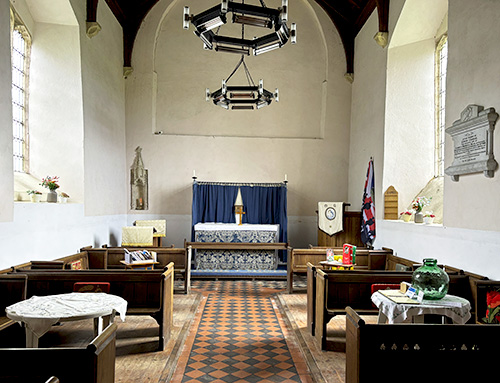
These religious houses and wayside chapels served as landmarks (and still do today on the Walsingham Way), providing both spiritual comfort and physical shelter.
Connecting with History: The Many Spiritual Stops Along the Way
I’ve been learning more about Pilgrim routes since I’ve walked the Walsingham Way, and I’m fascinated by how they connect multiple historic sites together, and the impressive way these religious houses were built and the reasons why people walk pilgrim routes.
Many pilgrims stopped at smaller holy spots on their way to Walsingham—pausing at roadside shrines, visiting saints' relics in churches, and seeking blessings at holy wells along the route. And you can do exactly the same along the Walsingham Way should you wish – there are so many wonderful churches to pause in, but you may not find a well until you reach Walsingham!
Pilgrim Badges - The Medieval Souvenir
Every pilgrim needed their pilgrim badge – the medieval equivalent of today's souvenir fridge magnet! These lead or pewter emblems which were worn on hats or cloaks, showed which pilgrimage someone had completed. Walsingham badges usually featured symbols of the Annunciation, and finding one today is apparently an archaeologist's dream! Unfortunately, there are no specific badges for the specific Walsingham Way at present. However, if you drop into one of the shrine shops in Walsingham, you’ll find a pilgrim badge of sorts.
And you can see some incredible ancient relics if you stop at the Slipper Chapel in Houghton-St Giles.
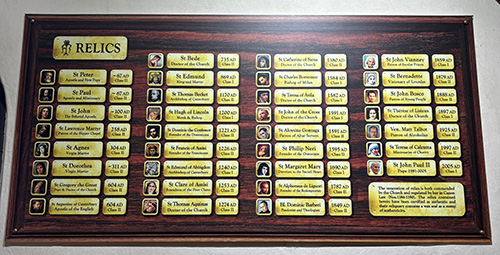
Modern Pilgrimage - A Continuing Tradition
The shrine and pilgrimages were suppressed during the Reformation, bringing a end to centuries of pilgrimage tradition. However, this was revived in the late 19th century, and today Walsingham is one of England's leading pilgrimage centres.
In the 19th century, pilgrims could hop off the train right at a special stop near the Slipper Chapel in Houghton St. Giles. But when that railway line closed in 1964, pilgrims then started coming by car and coach instead.
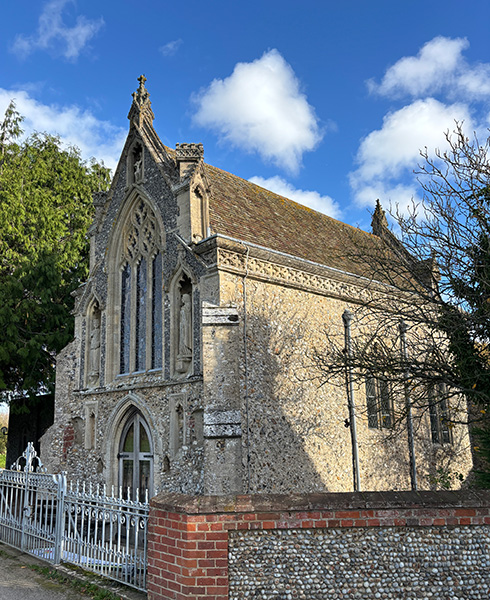
Pilgrimages saw a bit of a comeback in the 1930s, although this was stopped during WWII when Walsingham became a restricted zone. A really important moment came on May 17th, 1945, when American Forces held the first Mass in the Priory grounds since the Reformation. That day marked a major turning point in Walsingham’s revival.
What happened that day wasn’t just a one-off event. By 1948, it sparked two new pilgrimage traditions: the Student Cross pilgrimage and the Cross Carrying Pilgrimage for Penance and Prayer. These still happen today, with students carrying wooden crosses to the shrine during Holy Week, keeping centuries-old devotion alive.
For more on Pilgrimage Routes around Britain, you can visit the British Pilgrimage Trust website here.
Pilgrimages Today - More Popular Than Ever!
Today around 250,000 pilgrims visit Walsingham each year. The National Pilgrimage, held every year on the late May Bank Holiday, is the biggest Anglican event, with approximately 1,500-2,000 people taking part.
Mary: A Figure Of Comfort And Inspiration
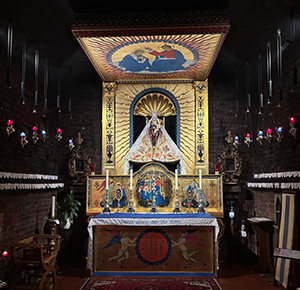
Within the Holy House sits the beautiful statue of Our Lady of Walsingham. It's important to understand that the statue itself isn't worshipped - it serves as a visual focal point for prayer and devotion.
Pilgrimage in Norfolk isn’t just about history, it’s very much alive today. Besides the well-known Roman Catholic 'Dowry of Mary' pilgrimage, there are also vibrant Tamil pilgrimages that draw people from all over.
Younger generations are also getting involved too, with festival-style gatherings in nearby fields during the summer. The Anglican Youth pilgrimage in late July and the Catholic New Dawn near the Slipper Chapel in August are great examples of how these traditions keep evolving and inspiring new people every year!
Experience Your Own Pilgrimage on the Walsingham Way

Are you feeling inspired to walk in the footsteps of countless pilgrims through Norfolk's beautiful countryside? I've put together a wonderfully contemplative pilgrimage walking package on the Walsingham Way from Norwich to Walsingham that lets you experience this ancient spiritual journey for yourself.
My Walsingham Way package includes detailed route maps, accommodation and luggage transfer, historical information, and all you need to make your own pilgrimage special.
Whether you're walking for spiritual reasons, to connect with history, or simply to enjoy Norfolk's landscapes, this ancient path has something magical to offer.
Click here to discover more about my Walsingham Way walking package and begin planning your own Norfolk pilgrimage adventure.


